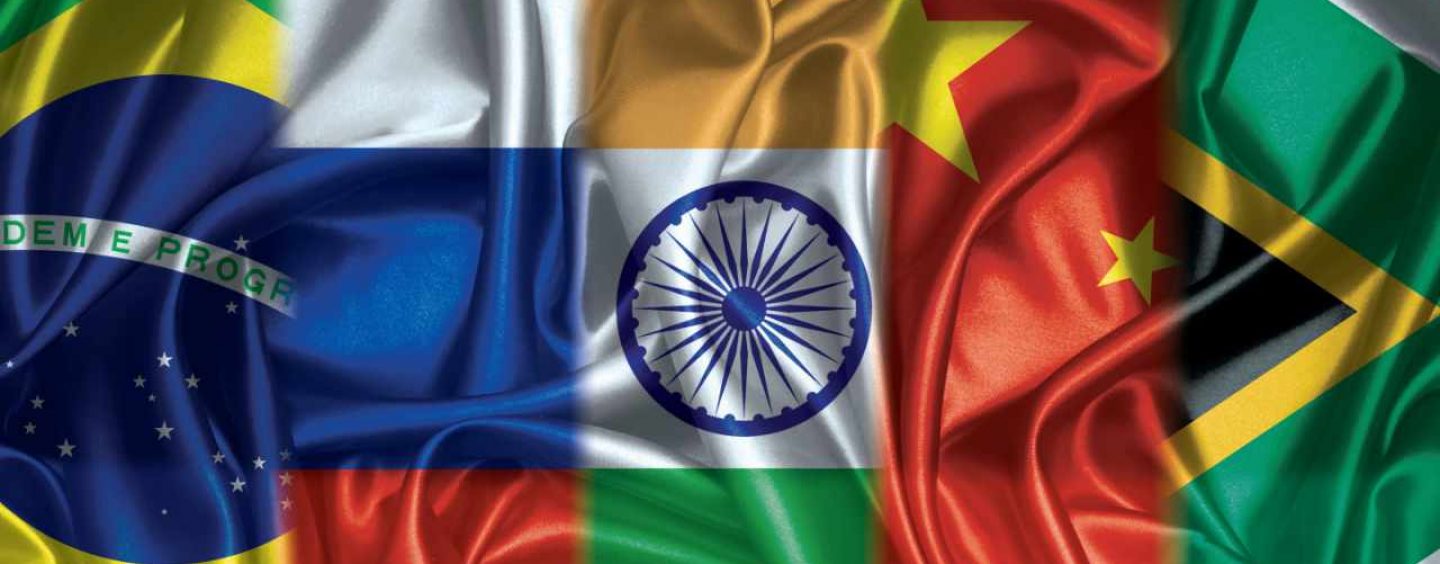
Geopolitical Initiatives On The Regional And Global Levels On The Example Of BRICS
By Nika Chitadze, Professor of the International Black Sea University
Director of the Center for International Studies
BRICS is an acronym for the top five emerging (except Russia) economies: Brazil, Russia, India, China, and South Africa. The first four were originally grouped as “BRIC” (or “BRIC”) in 2001, and South Africa joined in 2010.
The total area of the BRICS countries is 39,746,220 km2 (15,346,100 sq mi) and the total population is estimated at 3.21 billion people, or about 26.7% of the world’s land surface and 41.5% of the world’s population. Brazil, Russia, India, and China are among the top 10 largest countries in the world by population, area, and GDP. All five states are members of the G20 with a combined nominal GDP of $26.6 trillion (about 26.2% of gross world product), a total GDP (PPP) of about $51.99 trillion (32.1% of global GDP in PPP), and total foreign exchange reserves are estimated at $4.46 trillion (as of 2018).
BRICS was created to draw attention to investment opportunities and was not an official intergovernmental organization. Since 2009, they have increasingly evolved into a more cohesive geopolitical bloc, with governments meeting annually at official summits and coordinating multilateral policies; On July 24, 2022, China hosted the 14th BRICS summit and in August 2023, the summit was held in South Africa.
BRICS is considered the main rival of the G7 bloc of advanced economies, having announced competing initiatives such as the New Development Bank, the Contingent Reserve Facility, the BRICS payment system, and the BRICS reserve currency. Since 2022, the group has been looking to expand membership and several developing countries have expressed interest in joining.
Possible further expansion
From January 1, 2024, six more countries – Argentina, Iran, the United Arab Emirates, Saudi Arabia, and Ethiopia – will be added to the list of BRICS participants.
Also, other 22 countries applied to join BRICS.
The BRICS Has Overtaken The G7 In Global GDP
It is necessary to point out, that the share of BRICS is coming to 31.5% of global GDP, while the G7 share has fallen to 30%. The BRICS is expected to contribute over 40% of global GDP by 2030, with the proposed enlargement almost certainly bringing that forward.
At the same time, it is necessary to point out, that number of total population in BRICS countries is 3,5 billion people, and in G7 countries is about 800 million. Thus, by GDP per capita, G7 countries have a high advantage.
Problems inside BRICS
Despite the above-mentioned initiatives, it should be pointed out that the existence of political and economic problems inside BRICS first of all on the bilateral level. Let`s consider two examples.
Case of China-India relations
It should be noted that the two BRICS members, China and India, are not in a good relationship with each other. In 2020, their soldiers clashed at the border, which continued into 2021 and 2022. All this strained trade relations between the two Asian giants. Especially for India. The influential The Economist writes on this topic and talks about ways for India to get rid of China’s economic oppression.
For years, Indian consumers and Indian companies have relied on cheap Chinese goods, especially in industries of the future. While China buys cotton, granite, diamonds, and petrol from India, China sends India memory chips, integrated circuits, and pharmaceutical ingredients. As a result, trade is becoming increasingly one-sided. Of the $117 billion in goods flowing between the two countries in 2022, 87% came from China.
According to the statement of the Prime Minister of India, Narendra Modi, he wants to reduce dependence on China.
One reason is commercial – Mr Modi is trying to replicate China’s nationalistic, export-led growth model, which means taking some business away from China. For example, on August 3, India announced new licensing restrictions on imported laptops and PCs—devices that come mostly from China. A week later, it was reported that similar measures were being considered for cameras and printers.
Officially, India is open to Chinese business as long as it complies with Indian laws. In practice, the Indian government uses several tools to make it difficult or impossible for Chinese brands to exist in India. The most egregious of these are outright bans on Chinese products, often on national security grounds. For example, after the border fight in 2020, the government banned 118 Chinese apps, including TikTok, WeChat, Shein, etc. Hundreds of apps were banned for similar reasons in 2022.
Another popular tactic is tariffs. In 2018, due to Chinese competitors, the government imposed a 20% tax on imported devices. It has tripled tariffs on toy imports, most of which come from China, to 60% in 2020, and raised them to 70% earlier this year. Since then, India’s toy imports have fallen by three-quarters.
In February, the Indian government began providing $2 billion over six years to companies that would manufacture pharmaceutical ingredients locally that they previously bought from China.
The second field is electronics. Apple’s iPhone contract manufacturers, such as Foxconn Pegatron Taiwan and Tata, are allowed to buy Chinese-made components, provided they try to increase local suppliers. A similar deal appears to have been offered to Tesla, which is looking for new locations to build electric cars.
Some Chinese firms, fed up with all this, are cutting ties with India. In July 2022, after a two-year effort that included investing $1 billion in India, Great Wall Motors shut down its Indian car production. Others try to adapt first.
Xiaomi has announced that it will expand its exports from India, which so far only go to neighboring countries, to Western markets.
Given India’s growing misgivings about China, things may go against the plan.
Case of Russia-China relations
Despite the fact, that after the invasion of Russia in Ukraine, China did not join the economic sanctions against Russia and the volume of trade between the two countries increased by about 29% in 2022, China refused to export to Russia any military product and direct support the Kremlin imperialistic policy against Ukraine – an independent state. Furthermore, if we take into consideration that the volume of trade between the USA and China in 2022 was about 690 billion USD and between the EU and China about 500 Billion Euro, it can be concluded, that for Chinese officials is more convenient to keep the economic relations with the western countries instead of Russia.
Conclusion
In general, it should be pointed out, that despite some desire for cooperation between BRICS member countries and possible enlargement by the acceptance of new member states in this non-formal coalition, there are many obstacles in the way of development of the further integration processes among the BRICS member countries.





